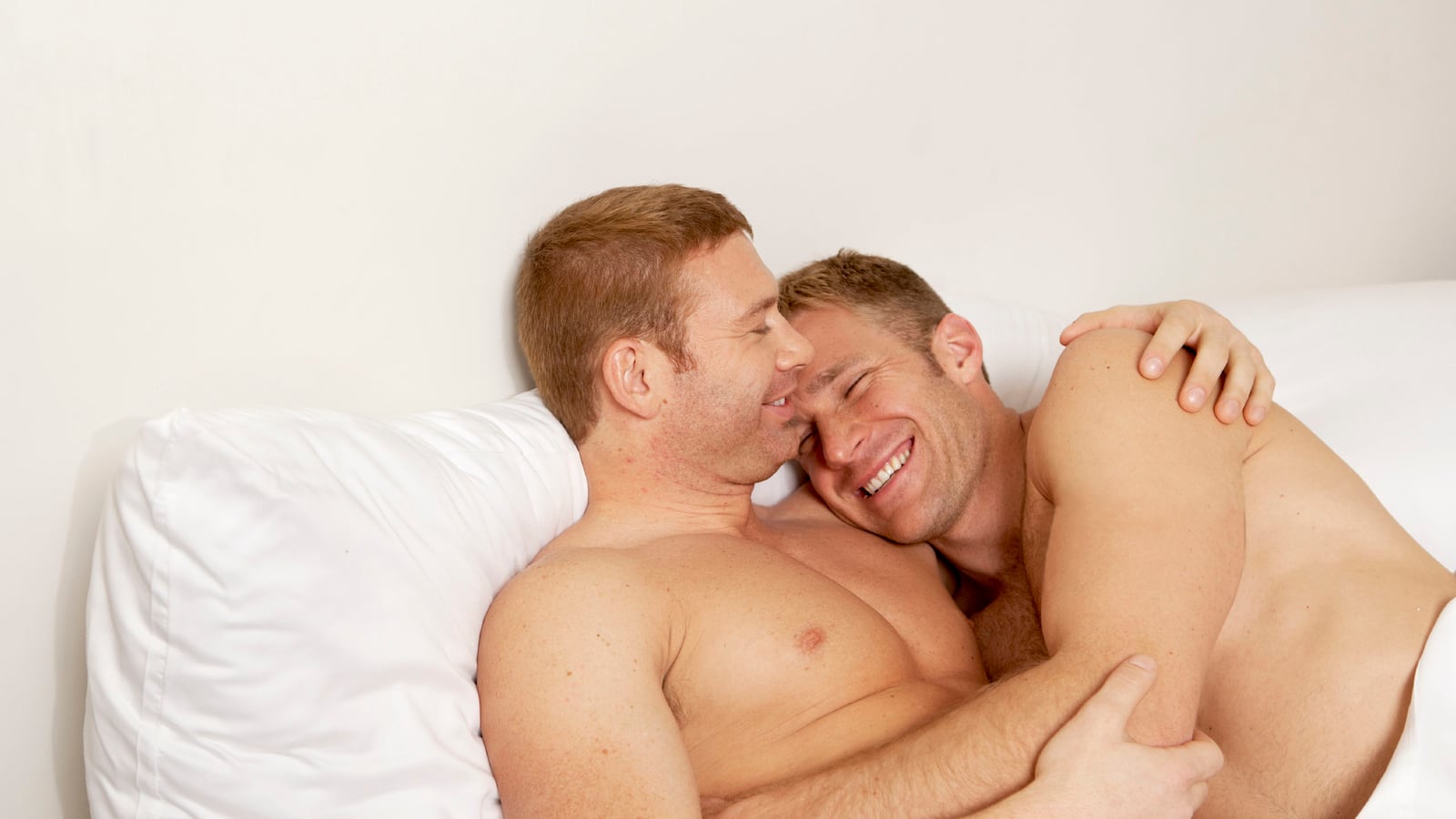America is getting gayer. It’s getting gayer all the time.
Not only do a full seven percent of Millennials now identify as LGBT, a new study in the journal Archives of Sexual Behavior found that the percentage of Americans who reported a same-sex sexual experience doubled between the early 1990s and the 2010s.
The study—conducted by researchers at Florida Atlantic University (FAU), San Diego State University (SDSU), and Widener University—analyzed nearly 34,000 responses to the the General Social Survey (GSS), which has been administered to representative samples of U.S. adults since 1972.
The percentage of men who reported having had sex with at least one man rose from 4.5 percent in the early 90s to 8.2 percent in the 2010s. Women saw an even larger bump from 3.6 percent to 8.7 percent over the same time period. Overall, the percentage of American adults who have had sex with both a man and a woman more than doubled from 3.1 percent to 7 percent.
It’s not just Millennials who are driving this statistical trend, either. The numbers went up consistently for almost everyone below retirement age.
“The increase in same-sex sexual experience appeared consistently across all age groups up to those in their 50s and inconsistently for those in their 60s, 70s, and up,” the study noted.
While Millennials’ numbers for same-sex experiences were particularly high—7.5 percent for men, 12.2 percent for women—they are not wildly out of step with the broader trend. In other words, there’s probably nothing specific about Millennials themselves that makes them more likely to venture outside the bonds of heterosexuality.
“Taking into account their age and the time period that they’re living in, we see that [Millennials] are right about where we’d expect,” Dr. Ryne Sherman, one of the study’s co-authors and an assistant professor of psychology at FAU, told The Daily Beast.
“Another way of saying this is: everybody’s shifting,” he explained.
Everybody is indeed shifting, even older generations of Americans. The authors observed a “time period effect” in the GSS data that could be explained in two ways: some older people who had same-sex encounters years ago may have “only felt free to admit to them in later decades” or, perhaps, they simply “felt more free” to partner with someone of the same gender in their golden years.
This boost in same-sex sexual encounters does not necessarily correspond directly with people openly identifying as lesbian, gay, or bisexual. As the study notes, much of the change was driven by bisexual behavior “with little consistent change in those having sex exclusively with same-sex partners.” In addition, the relevant questions on the GSS ask only about sexual behavior, not sexual orientation.
“We don’t know if people are actually identifying as homosexual, lesbian, or bisexual,” said Sherman. “All we know is that we’ve seen an increase in people reporting that they’ve had sexual relationships of the same sex.”
It’s also possible that the numbers reflect an increased openness about same-sex sexual experiences rather than an actual spike in the raw fraction of people who are hopping into bed with someone of the same gender. Americans might simply be more honest about sex on the GSS than they were at the tail end of the Reagan administration. Along these lines, the researchers found that social acceptance of same-sex sexual behavior had soared to 49 percent of adults in 2014 from 13 percent in 1990.
That acceptance, however, still differs dramatically by region. In the 2010s, for example, only 22 percent of Southerners said that having sex with someone of the same gender was “not wrong at all.” But in this case, there may be a wide gap between what Southerners say and what they do.
“In fact, the South experienced a smaller increase in acceptance of same-sex sexual behavior compared to other regions, even as more people in the South reported engaging in same-sex sexual behavior,” the authors observed.
According to the GSS, the South and the Midwest saw the two most dramatic increases in the percentages of adults reporting having had sex with both men and women. Some of that increase can be attributed to having more room to grow.
From 1989 to 1994, just over 2 percent of Midwesterners and barely 3 percent of Southerners reported bisexual behavior—lower than either of the coasts. By the 2010s, however, those numbers increased to about 8 percent in both the South and Midwest.
But dating apps and websites, the authors speculate, may have also helped larger numbers of Southerners and Midwesterners find same-sex partners over the last fifteen years.
“[W]hile those in the East and West may have long had access to potential sexual partners via urban centers with strong LGB communities and venues,” they wrote, “those in the South and Midwest may have benefited more from the emergence of sexual networking technologies in terms of access to potential partners.”
Sherman and study co-author Dr. Jean Twenge (who is a Daily Beast contributor), a psychology professor at SDSU, are not surprised by this nationwide trend toward greater sexual freedom.
In previous articles, they have examined other large social shifts over time—in religiosity, for example, and in reported personal happiness. What they are witnessing is a trend away from restrictive cultural norms toward individualism, which Sherman loosely defines as seeing the “self as an actor who is responsible for their own choices, decisions, and behaviors.”
Sherman told the Daily Beast that they suspect “individualism is driving all of these changes,” taking care to point out that individualism is not a value specific to younger generations of Americans.
“Everybody’s becoming more individualistic,” he said. “It just so happens to be that this is the only time that Millennials have lived.”






